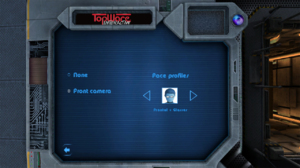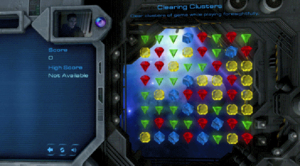Introduced in a 2010 upgrade of TopWare's best-selling real-time strategy game “Two Worlds II: Castle Defense”, and currently implemented in the upcoming puzzle game “3SwitcheD”™. 3D-ET™ can access and use any video camera present in the system, regardless of the platform and the camera's parameters and capabilities.
To better adapt 3D-ET™ to the appearance of their faces, the user may also select one of several facial profiles. By choosing the appropriate profile the user can make the game's automatic adaptation even quicker and easier. The facial profile influences the recognition patterns and algorithms used by 3D-ET™, in order to better identify certain distinct features of the visage being tracked.
“3SwitcheD”™ includes the following facial profiles:
the default setting, applicable to the majority of faces, both male and female.
/











